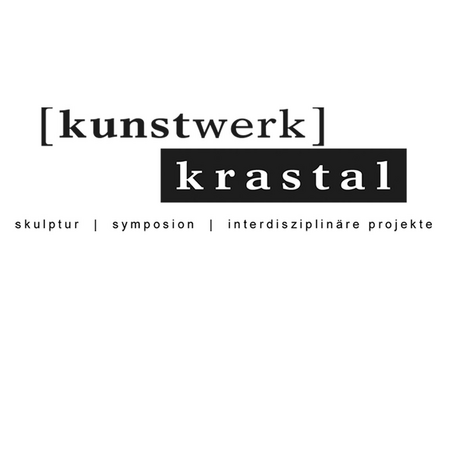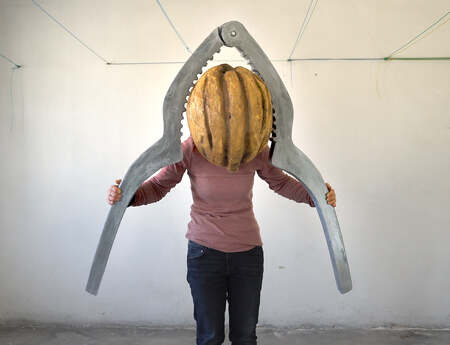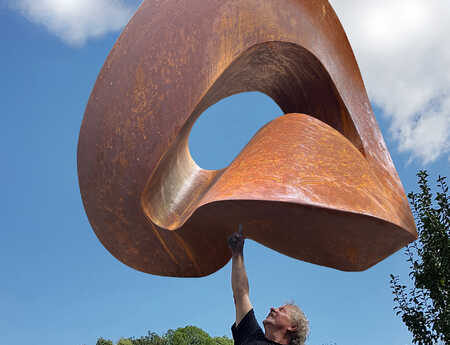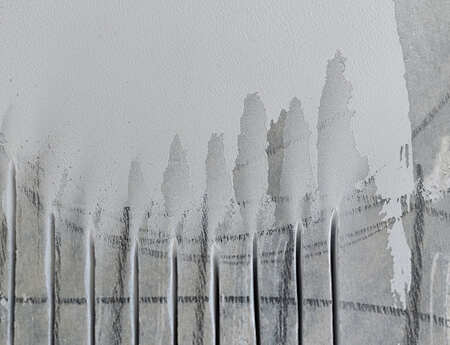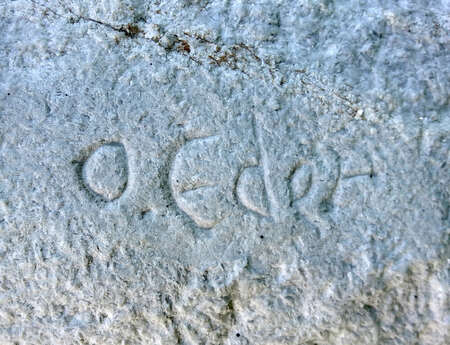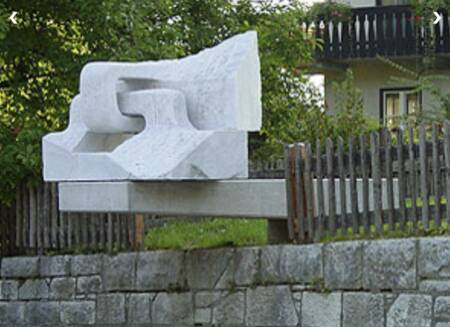
Krastaler Strasse 24
9541 Kras
Austria
[kunstwerk] krastal
[kunstwerk] krastal is an independent, non-profit organization. A place of creation, exchange and diffusion located near Villach and Ossiacher See in the south of Austria. Founded in 1967 and maintained by an alliance of artists from different disciplines, architects and theorists.
about sculptors’ symposion [kunstwerk] krastal
”it may actually be a mistake to believe that you can share in art, purely by sharing in its products: to have a share in it is only possible through the participation in the creation of art. And in a symposion the creation of art is made manifest - that is its significant novelty”1
The sculptors’ symposion was the idea of the sculptor Karl Prantl, who at 1959 initiated together with the sculptor Heinrich Deutsch and the psychologist Friedrich Czagan the first symposion “Symposion Europäischer Bildhauer” in the stone quarry of Sankt Margarethen, Austria. Fourteen sculptors from seven different countries spent three months working together and living in a quarry. They created large sculptures, communicated their ideas and plans as well as organized literary and musical events during the symposion. In the next years, until 1971 eleven further symposia took place in Sankt Margarethen.
The sculptures created during the symposia were integrated into the landscape or even they were specifically created in situ for the surroundings of the stone quarry, for example a significant early land-art work “The Japanese Line”, an initiative of Makoto Fujiwara realized in collaboration with four fellow Japanese artists. The events were partially financed from occasional sales of sculptures.
The sculpture symposia were a significant non-governmental artist initiative of its time. It allowed the sculptors to move out from their workshops, to create independently monumental sculptures that fit into specific rural and urban contexts and during the creative process to form a communion of ideas, to exchange on actual artistic, socio-political questions opening up new perspectives of artistic creation.
Karl Prantl wrote on the occasion of the first symposion in St. Margarethen: "For us, sculptors thought, that by the experience of St. Margarethen, by this going out into the open space - in the quarry, on the meadows, that we became free again. This becoming free or freethinking got a very broad sense. For us sculptors, the stone is the means to come to this freethinking - to become free from many constraints, narrows and taboos."2
The initiative had an important impact in the artists’ society and parallel with Sankt Margarethen other symposia followed the model in Eastern and Western Europe. Forma Viva, in Portorož, Yugoslavia (1961), Bildhauersymposion Kaisersteinbruch in Gaubüttelbrunn (1961), and Berlin (1961-62) Germany, in Vyšné Ružbachy (1964) and in Hořice (1966) Czechoslovakia, in Krastal and in Lindabrunn, Austria (1967), in Mauthausen, Austria (1970) - initiated in most cases by the participants of the symposia Sankt Margarethen. Later on, the idea of sculptors’ symposion has been taken up all over the world.
The "1. European Sculptors’ Symposion in Krastal/Carinthia” was taken place in 1967. It was organized by Karl Prantl together with Felix Orsini Rosenberg architect and Christa Hauer painter-gallerist. Otto Eder who knew the stone quarry in Krastal had an important roll to engage for the project Viktor Brojatsch the head of Lauster marble quarry. The next year (1968) the symposion is organized in Europapark, Klagenfurt and followed by a symposion in 1969, which take place both in Krastal and Europapark, and since then, every year a symposion was held in Krastal marble quarry without interruption, which so far no other symposion succeeded. From 1969, Otto Eder has continued the organization together with Hans Muhr and Günther Kraus. He made efforts for the lasting establishment of the symposion, initiated the foundation of an association and later on the construction of the “bildhauerhaus”.
The sculptors’ symposion in Krastal since its foundation had the objective to give emphasis to a better establishment of stone sculpture in the contemporary art scene as well as provide new tasks for sculpture in the urban landscape and [kunstwerk] krastal is a continuously renewing interdisciplinary forum for artists, architects, theoreticians, scholars.
Symposion [kunstwerk] krastal has priorities, which had not changed since its establishment, which shows certain differences with later established other symposia. Our symposia’s goal is to give opportunity for artistically independent creation - it is to provide infrastructure and give support for a research and the realization of artworks, to facilitate the exchange between artists, theorists, individuals. Symposia are focusing on artistic, sculptural, socio-political questions.
Habitually each symposion is organized by two or three members of [kunstwerk] krastal around a concept or topic. The organizers have a big autonomy concerning the concept and the modalities of inviting participants, and it results a large diversity of projects. The artworks created at [kunstwerk] krastal remains the property of the artist.
____________________
1 Jürgen Morschel, Kunst unter neuen Voraussetzungen, in: Das Kunstwerk No. 32/5, 1979, p. 4.
2 Karl Prantl (1976) Zitiert nach Hartmann/Pokorny, Bildhauersymposion 1988, S. 10
masterclass [kunstwerk] krastal
sculpture in the contemporary context and the stone as medium
Masterclass [kunstwerk] krastal intends to create a collaborative exchange platform to stimulate the emergence of unprecedented forms and expressions in sculpture and new approaches to the use of stone. It aims to deploy the conceptual aspects of the sculpture; the possibilities, the material - immaterial limits of it - and to bring an analysis of the perception of sculpture into the contemporary context, as well as a study of the context. Prompt interaction between theory, concept and experience provide the means for the conceptualization and development of a project and support its realization.
Masterclass [kunstwerk] krastal bases on collaboration, where the term “master” refers to an overall level of discourse of an informal heterogeneous group rather than defining a hierarchical correlation of master and participants and is realized in partnership with artists, theoreticians, philosophers.
for further information and possible dates, please contact:
Attila Rath Geber
masterclass@krastal.org
[λογεῖον]
- the term logeion means a collection of scripts, texts and scrolls, and additonally the spot on the stage where a speaker stands. An additional connotation is the loggia, the arbor, respectively a room of a building that is open to the outside.
The logeion is a platform concerning the research in sculpting and mutual fields, providing relevant literature, as well as comments, essays, and treatises from colloberators of [kunstwerk] krastal. The focus is put on object art, specifically on stone sculpting – in a theoretical as well as in a practical perspective. Stone sculptures are usually reduced to their mere material properties. What the logeion aims for is to treat stone sculptures as mediators for intersubjective communication about art, politics and society, and as non-human actors within this field of communication. This approach is concerned with working in the fields of aesthetics, theory and history of art, as well as theory of design, technologies and new media. The goals of the logeion-platform are to enable a theoretical discours about sculpting and mutual topics in a para-academic way, the collection of relevant texts, and to provide a network for researchers in this field.
Bernd Gutmannsbauer
Sculpture in the Krastal Valley: "from river to lake"
The Sculpture Path "from river to lake" was created as an EU-Leader Project in 2004 according to a concept by architect Peter H. Schurz, and was completed in 2005. The artistic direction was handled by sculptors Michael Kos and Egon Straszer.
The Sculpture Path's 15 sculpture sites at present connect the local council areas of Weissenstein and Treffen, thereby connecting the valley of the river Drau with the Gegendtal valley along the local road through the Krastal valley.
The first site lies on the banks of the river Drau, immediately on the Drau Cycle Path; the last site is at the junction with the main national road at Treffen. In the municipal area of Treffen, however, there is also an older path of sculptures stretching all the way to Sattendorf, and therefore to the Ossiacher Lake.
Large-scale and monumental works by 27 sculptors from Austria and abroad, created during the International Symposia at Krastal, are integrated into the new Sculpture Path. The Treffen area contains a further 35 works of sculpture.
The whole region is therfore distinctively marked by the results of the annual sculpture symposia taking place there, especially as the new roundabout at the motorway exit, forming a gateway to the Gegendtal valley and the Ossiach area was enhanced with three additional sculptures in 2007.
